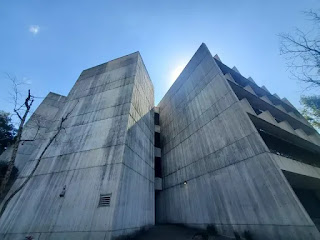There's a reason God created dynamite.
It's official. Washington, DC is home to some of the ugliest government buildings on the planet.
Build World, a global design company, recently analyzed some of the world's worst architectural eyesores and decreed that the J. Edgar Hoover Building, the FBI headquarters in Washington, is the ugliest building in America and the second ugliest in the world.
 |
| J. Edgar Hoover Building |
However, the J. Edgar Hoover Building has competition as the nation's top eyesore. Newly appointed HUD Secretary Scott Turner said the Robert C. Weaver Building, HUD's headquarters, is the ugliest in the nation's capital.
 |
| HUD Headquarters in Washington, D.C. |
Both buildings are Brutalist structures, representing a soulless, depressing architectural style that was fashionable in the 1960s and 1970s. At the theoretical level, Brutalism championed "functionality, honesty, and social purpose," but the structures themselves mostly look like concrete, maximum security prisons.
The Trump administration plans to move government workers out of both buildings and sell them. However, decommissioning these monstrousities is not enough because they will remain a blight on the landscape of our nation's capital.
Rich Lowery, a syndicated columnist, believes both buildings should be blown up. "There's a reason God created dynamite, " he wrote, and I agree.
I worked as a professor for six years in Farish Hall, a forboding concrete building at the University of Houston. I didn't know at the time that I had been assigned to a Brutalist building, but I knew on a subconscious level that I was spending my days in a dispiriting, oppressive, and prison-like environment.
 |
| Farish Hall at the University of Houston |
I was pleased to learn that the University plans to demolish Farish Hall this year and will not replace it. That's a good start, but UH has other Brutalist buildings, and all of them should be razed. Agnes Arnold Hall, for example, where three students have leaped to their deaths, is nearly as ugly as Farish Hall.
Brutalist architecture has its defenders. Indeed, some critics will praise the J. Edgar Hoover Building and the HUD headquarters simply because Trump wants to scrub them.
In my view, Brutalist architecture is indefensible. Most Brutalist buildings appear indistinguishable from the Cold War bureaucratic structures of the Soviet Union. These eyesores are contrary to the American spirit, and all of them should be razed. Trump should demolish all the Brutalist government buildings in our nation's capital, and the universities should blow up the obscene Brutalist buildings that deface their campuses.
What is the ugliest university building in America? I vote for the Claire T. Carney Library at the University of Massachusetts Dartmouth.
 |
| Claire T. Carney Library at the University of Massachusetts at Dartmouth |

